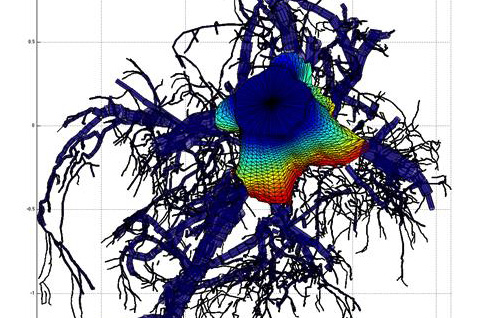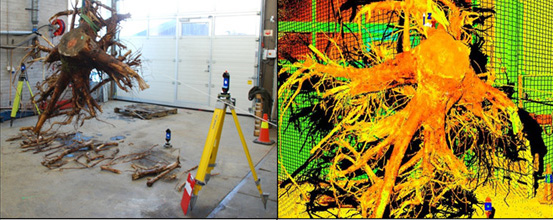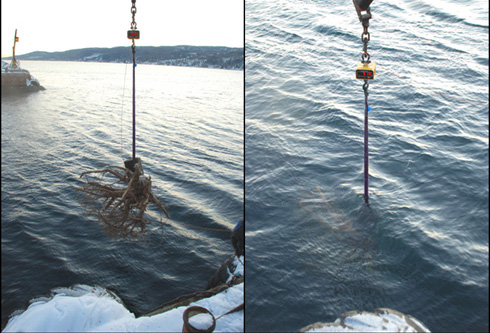Press release 2015-01-02 at 10:56
Tree stumps and root systems are a significant but controversial source of bioenergy in Finland due to their environmental impacts. Now Finnish and Norwegian researchers have developed a new method that can produce accurate three-dimensional (3D) models of recovered stumps and root systems. These models provide new information on the impacts of stump wood energy on the carbon sink capacity of forests, the biodiversity of forest nature and the soil structure of recovery areas.

Tree stumps and root systems account for approximately 15% of the energy wood harvested from Finnish forests. Tree stumps are recovered from one in every ten clearcutting areas, totalling some 10,000–20,000 hectares annually, which is, at its highest, equivalent to an area the size of Helsinki.
The environmental impacts of stump wood recovery depend on the structure of the stumps and root systems harvested. The size of the stumps and roots is the most significant factor for determining impact on forest carbon balance, while the impact on biodiversity depends on the amount of sturdy stump wood aboveground. Meanwhile, the impact on soil structure depends on how widely distributed and deep the roots are.
The new method, which combines laser scanning and 3D modelling, makes it possible to quickly produce an accurate image of the structure of stumps and roots.
In the stump wood recovery area studied, over half of the total mass of tree root systems consisted of tree stumps, while small roots under 5 cm in thickness comprised 20% of the total mass. However, only some of the stumps were above ground, meaning that 5–25% of the total mass of the tree root systems consisted of coarse woody debris valuable for biodiversity.
Due to their large size, the tree stumps and root systems found in forests decompose slowly and continue to store carbon for decades while doing so. This characteristic increases the climate impact of stump wood energy.
The roots of individual trees covered areas of 1.5–5 m2, and the underground depth of most of the roots was 10–40 cm. If 500 stumps are recovered from a hectare of land, the structure of the soil is damaged in 5 to 25% of the total area. In addition to this, the forestry machines used to recover the stumps may also damage the soil structure.
The new method can be used in various stump recovery sites to gather data on the environmental impacts of forest energy. This data can be used to improve environmental impacts if necessary, and to make sure that the recovery of stump wood meets sustainability requirements.

Most of the mass of the tree root systems studied was in the stumps and thick underground roots.

To assess the size of a tree root system, it was first weighed in the air and then in the waters of a Norwegian fjord.
More information
Research Professor Jari Liski, The Finnish Environment Institute, tel. +358 (0)295 251 385, firstname.lastname@ymparisto.fi
Professor Mikko Kaasalainen, Tampere University of Technology, tel. +358 (0)40 832 9412, firstname.lastname@tut.fi
Postdoctoral Researcher Pasi Raumonen, Tampere University of Technology, firstname.lastname@tut.fi
Research Manager Sanna Kaasalainen, The Finnish Geodetic Institute, tel. +358 (0)295 308 031, firstname.lastname@fgi.fi
- Research publication
Smith, A., Astrup. R., Raumonen, P., Liski, J., Krooks, A., Kaasalainen, S., Åkerblom, M. & Kaasalainen, M. Tree root system characterization and volume estimation by terrestrial laser scanning and quantitative structure modelling. Forestry.